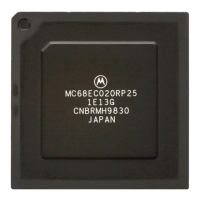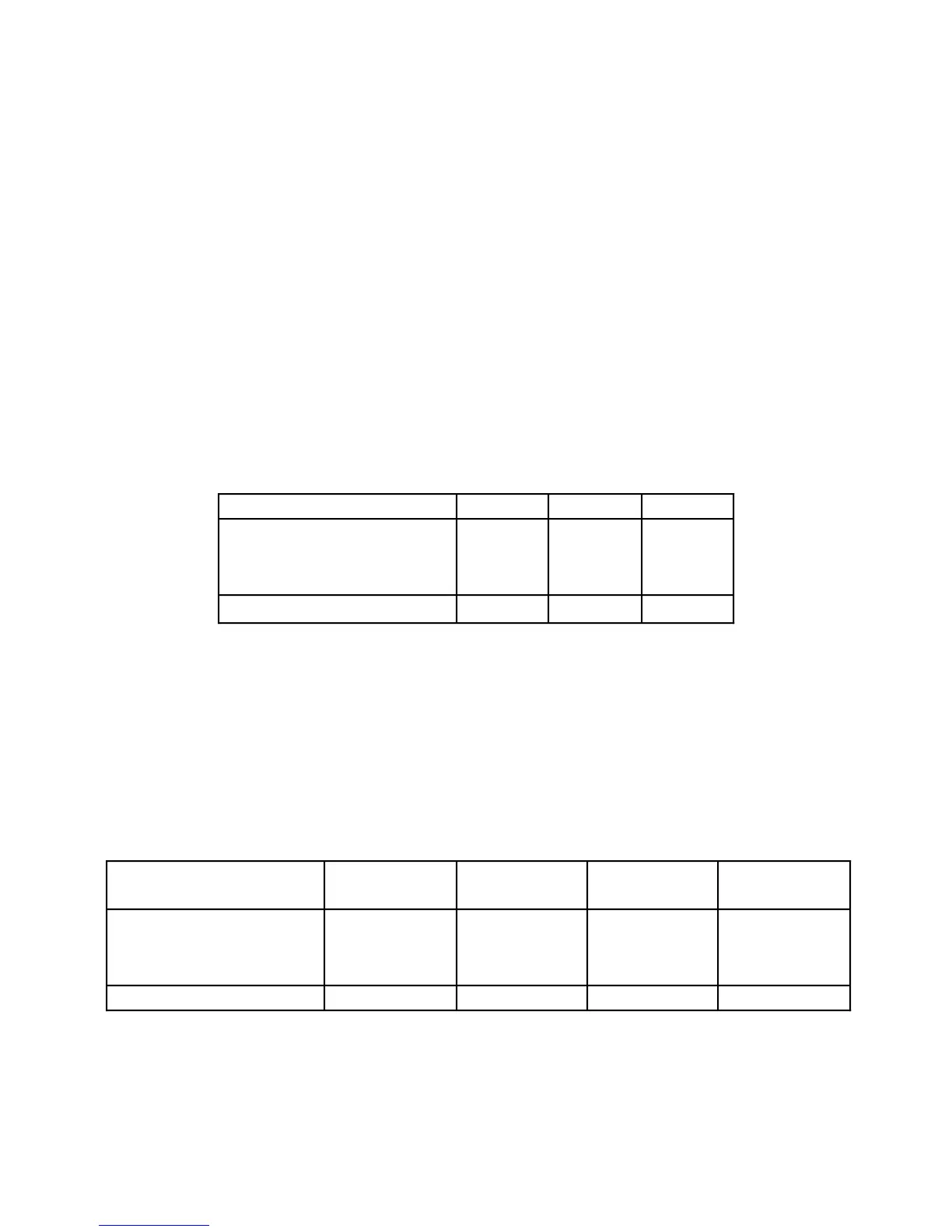MOTOROLA M68020 USER’S MANUAL 8- 11
NOTE
This CC time is a maximum since the times given for the
MULU.L and DIVS.L are maximums.
The MOVE instruction timing tables include all necessary timing for extension word fetch,
address calculation, and operand fetch.
The instruction timing tables are used to calculate a best-case and worst-case bounds for
some target instruction stream. Calculating exact timing from the timing tables is
impossible because the tables cannot anticipate how the combination of factors will
influence every particular sequence of instructions. This is illustrated by comparing the
observed instruction timing from the prior four examples with instruction timing derived
from the instruction timing tables.
Table 8-2 lists the original instruction stream and the corresponding clock timing from the
appropriate timing tables for the best case, cache-only case, and worst case.
Table 8-2. Instruction Timings from Timing Tables
Instruction Best Case Cache Case Worst Case
#1) MOVE.L
#2) ADD.L
#3) MOVE.L
#4) ADD.L
D4,(A1)+
D4,D5
(A1),–(A2)
D5,D6
4
0
6
0
4
2
7
2
6
3
9
3
Total 10 15 21
Table 8-3 summarizes the observed instruction timings for the same instruction stream as
executed according to the assumptions of the four examples. For each example, Table 8-
3 shows which entry (BC/CC/WC) from the timing tables corresponds to the observed
timing for each of the four instructions. Some of the observed instruction timings cannot be
found in the timing tables and appear in Table 8-3 within parentheses in the most
appropriate column. These timings occur when instruction execution overlap dynamically
alters what would otherwise be a BC, CC, or WC timing.
Table 8-3. Observed Instruction Timings
Example 1 Example 2 Example 3 Example 4
Instruction BC CC WC BC CC WC BC CC WC BC CC WC
#1) MOVE.L
#2) ADD.L
#3) MOVE.L
#4) ADD.L
D4,(A1)+
D4,D5
(A1),–(A2)
D5,D6
0
(1)
6
9
4
6
3
3
0
(1)
4
7
0
0
(5)
(8)
Total (16) (16) (12) (13)

